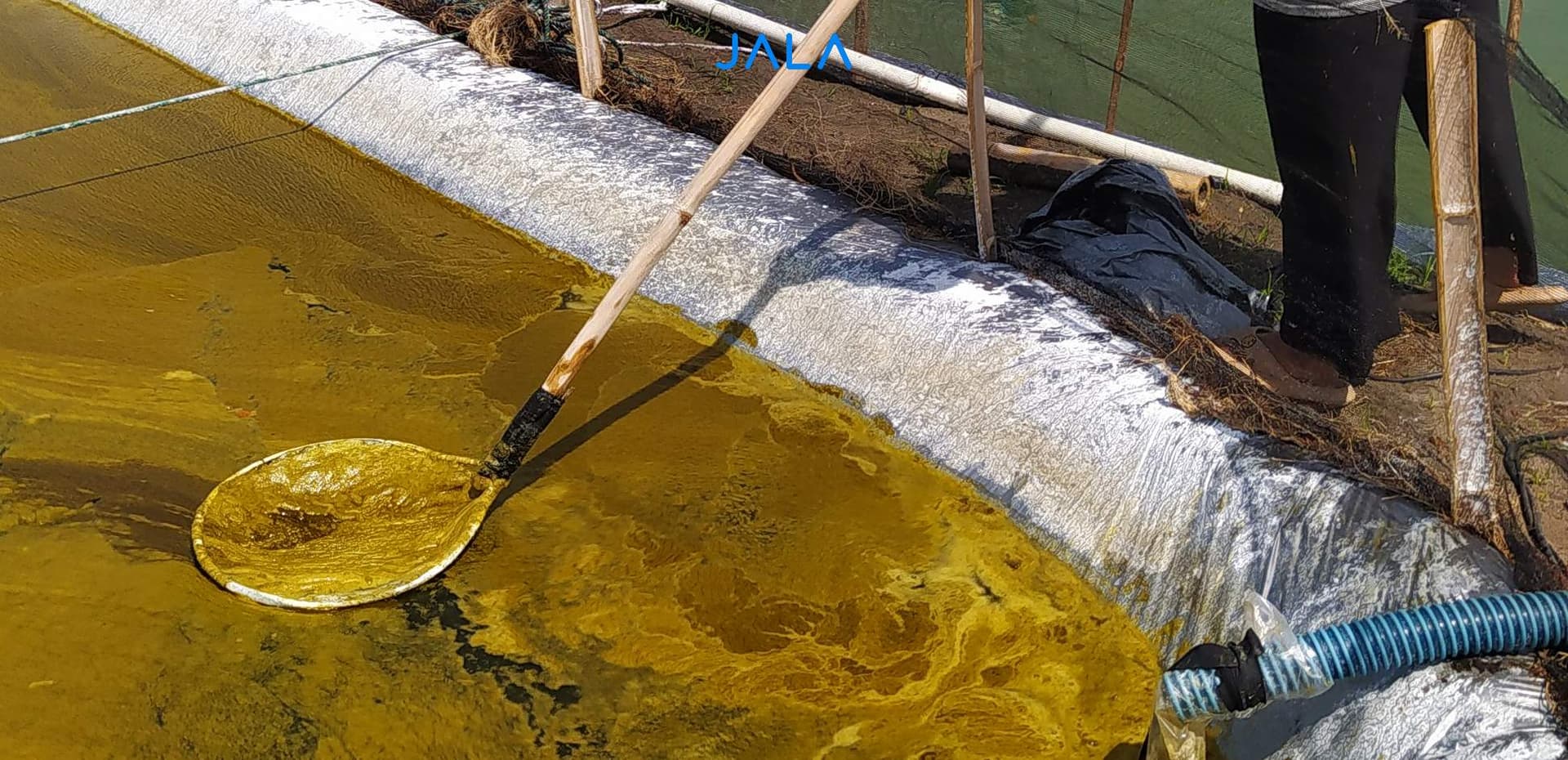
Shrimp cultivation is greatly influenced by the growth of algae or phytoplanktons in cultivation pond water. Algae is a group of organisms that live in water and can serve as natural food for shrimp. The presence of algae is also an indicator of water quality, as it plays a primary role as a producer in aquatic environments.
However, an excessive population of algae or phytoplankton can have negative impacts on shrimp ponds. This phenomenon is known as blooming algae, which is the sudden increase in the population of phytoplankton or microalgae. Although this event is rare, it can occur in ponds where water quality is not properly maintained.
Read more: The Importance of Water Quality Monitoring and How to Read Its Results
Causes of blooming algae
Blooming algae occurs when algae experience exponential growth, known as the log phase. During this phase, algae cells begin the process of cell division. The growth process during this phase is very rapid, leading to an abundant population of algae. This condition is indicated by the water becoming increasingly turbid, reaching a brightness level of <30 cm. Some factors that accelerate the growth of algae, leading to algae bloom, include:
1. Excessive nutrients One of the main factors which causes blooming algae is an excess of nutrients, namely nitrogen and phosphorus, in water. These nutrients contribute to blooming algae as they are the main nutrients required for algae growth. Excess input is usually caused by shrimp feed, which are rich in these nutrients.
2. High temperature The optimum temperature for blue-green algae (BGA) growth is 25-35°C. High temperatures also contribute to faster algae growth. This condition triggers a feedback loop where the more algae grows, the more sunlight is absorbed, resulting in warmer temperatures and even more algae growth.
3. Lack of stirring Lack of stirring or aeration from paddlewheels in farms also contributes to blooming algae. This is due to the fact that warmer water will move on top of cooler water, causing algae to bloom on the upper, warmer water surface.
Effects of blooming algae
Blooming algae causes a decrease in water transparency, resulting in dark green water. Consequently, dissolved oxygen (DO) becomes unavailable at the pond bottom, leading to the accumulation of toxic compounds such as ammonia, nitrite, and hydrogen sulfide. If the DO is too low or below 4 ppm, shrimp growth slows down, appetite decreases, and feed efficiency decreases. Low DO can also be indicated by shrimp swimming to the surface.
Ways to mitigate blooming algae
Farmers can take several steps to mitigate blooming algae, such as:
- Regularly changing pond water
- Determining the dosage and schedule for applying treatments to enhance plankton, such as lime, bacteria, and fermentation products, as needed
- Having proper feed management to prevent the accumulation of organic matter in pond water
- Regularly cleaning the pond bottom by siphoning
- Conducting aeration to continuously stir pond water with paddlewheels
- Increasing salinity (ensure that it stays within the normal range for shrimp), as some types of BGA cannot tolerate high salinity
The presence of plankton in pond water is one of the chemical water quality parameters to be monitored. Ensure to record plankton data regularly with JALA App. In addition to plankton, JALA App allows you to record more than 40 cultivation parameters, helping you detect any changes promptly.
Furthermore, regularly monitor water quality to detect any parameters that deviates from the ideal range and could trigger blooming algae. With Baruno, a multiparameter water quality measurement device, you can measure five water quality parameters simultaneously (temperature, pH, salinity, DO, and ORP). All data is accessible from the JALA App anytime, anywhere.
Algae or plankton is beneficial for shrimp cultivation, but when its population becomes too high, it will adversely affect shrimp growth and cultivation. Make sure to do regular monitoring and take the right step for a more productive and sustainable cultivation.





